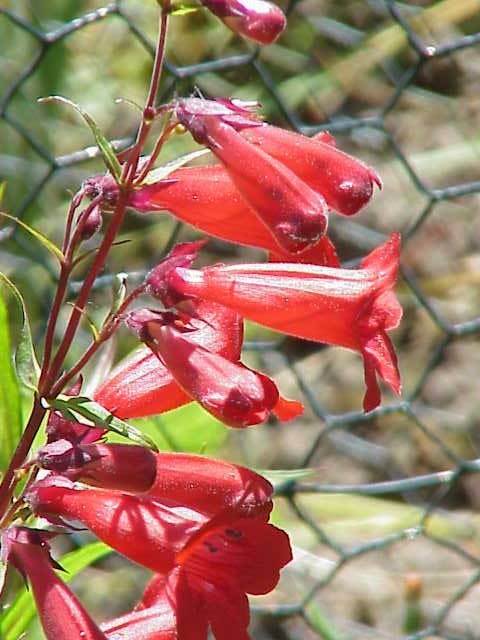
Penstemon barbatus (*)
Classification System: APG IV
Superregnum: Eukaryota
Regnum: Plantae
Cladus: Angiosperms
Cladus: Eudicots
Cladus: Core eudicots
Cladus: Asterids
Cladus: Lamiids
Ordo: Lamiales
Familia: Plantaginaceae
Tribus: Cheloneae
Genus: Penstemon
Subgenus: P. subg. Habroanthus
Section: P. sect. Elmigera
Species: Penstemon barbatus
Varieties: P. b. var. trichander – P. b. var. torreyi
Name
Penstemon barbatus (Cav.) Roth
References
Roth, A.W. 1806. Catalecta botanica quibus plantae novae et minus cognitae describuntur atque illustrantur. Fasc. 3. pp. [i–viii], [1]–350, [1–2, index pi.], [1–6, index] [1, err.], pls I–XII. Lipsiae [Leipzig]: in Bibliopolio Io. Fr. Gleditschiano. BHL Reference page.
Links
International Plant Names Index. 2017. Penstemon barbatus. Published online. Accessed: Oct. 29 2017.
The Plant List 2013. Penstemon barbatus in The Plant List Version 1.1. Published online. Accessed: 2017 Oct. 29.
Tropicos.org 2017. Penstemon barbatus. Missouri Botanical Garden. Published online. Accessed: 29 Oct. 2017.
USDA, ARS, Germplasm Resources Information Network. Penstemon barbatus in the Germplasm Resources Information Network (GRIN), U.S. Department of Agriculture Agricultural Research Service. Accessed: 09-Oct-10.
Vernacular names
English: Golden-beard penstemon, Beardlip penstemon, Scarlet bugler
suomi: Punapipo
Penstemon barbatus, known by the common names golden-beard penstemon, and beardlip penstemon, is a flowering plant native to the western United States. In Spanish-speaking New Mexico and southern Colorado, it is called varita de San Jose – "St. Joseph's staff".[1]
The plant has spikes of clustered, tubular, scarlet blossoms with yellow hairs on their lower lip; the flowers are very attractive to hummingbirds. It is commonly grown in Xeriscape and conventional gardens, and several cultivars of different colors have been developed.
The late-summer flowering of Penstemon barbatus coincides with the southern migration of the Rufous hummingbird, and the hummingbirds use the Scarlet buglers as "filling stations" for their long trip south.[1]
Uses
The Zuni people rub the chewed root of the torreyi subspecies over the rabbit stick to insure success in the hunt.[2]
References
Dodson & Dunmire, 2007, Mountain Wildflowers of the Southern Rockies, UNM Press, ISBN 978-0-8263-4244-7
Stevenson, Matilda Coxe, 1915, Ethnobotany of the Zuni Indians. SI-BAE Annual Report #30 (p. 95)
Retrieved from "http://en.wikipedia.org/"
All text is available under the terms of the GNU Free Documentation License

